
Manufacturer's Specifications:
System Type: Three-way; vented woofer.
Drivers: 8 1/2-inch woofer, 2-inch dome midrange, and 1 1/8-inch dome tweeter.
Crossover Frequencies: 700 Hz and 6.5 kHz.
Frequency Response: Within ± 1.5 dB of designed spectral balance.
Sensitivity: 88 dB SPL at 1 meter for 2.8 V input.
Impedance: 5 ohms at 350 Hz, 2.2 ohms at 9 kHz.
Recommended Amplifier Power: 20 to 160 watts.
Dimensions: 23 1/2 in. H x 10 3/4 in. W x 17 3/4 in. D (59.7 cm x 27.3 cm x 45.1 cm).
Weight: 39 lbs. (17.7 kg).
Price: $2,100 per pair.
Company Address: c/o Audio Products. Inc., 3 Cleveland St., Headland, Ala. 36345.
All four of John Fuselier's loudspeaker designs are high end audiophile systems. High end, however, does not automatically mean high price. Rather, it is a priority which places quality of sound before quantity of sound. The smallest Fuselier, the 2.5, at $775 per pair, is admitted to have low acoustic output, while its sound quality from mid-bass up is claimed to be excellent. The $2,100 per pair Model 3.8D, reviewed here, is poised at the top of the line, where sonic excellence, wide frequency range, and adequate acoustic output can coexist.
In his quest for quality, John Fuselier's first priority is achieving a very smooth frequency response over a practical range of off-axis listening positions. This requires the best available drivers, precision crossovers, and control of resonance, reflection, and diffraction.
The drivers in the 3.8D are all standard products from the highly respected Danish manufacturer, Dynaudio. The woofer, midrange, and tweeter are Models 21W54, D-52AF, and D-28AF, respectively. Fuselier prefers selected off-the-shelf components because they will be available in the future should repair be necessary. The retail price of these basic components is a hefty $250, and I don't suggest trying to "roll your own," because there is a lot more here than three speakers in a box.
A complex crossover network is used in the three-way Fuselier 3.8D. Next to driver selection, this circuitry is the most important factor in achieving smooth frequency response. There are three main design considerations. The first of these is selecting a circuit configuration and component values which will complement each driver to achieve the best acoustic bandpass responses. This can be considered a form of fixed equalization. Second, the acoustic phase shifts of adjacent high- and low-pass filters should be made to track each other, preventing polar-pattern shifts through the crossover range. Finally, when all filters are combined, the input impedance must present a reasonable load to the power amplifier.
Crossover components in the 3.8D are mounted to a p.c. board inside the cabinet. I counted eight film-type capacitors, two non-polar electrolytics, and four air-core inductors. I believe there are more components under the board. All connections are soldered, which, in my experience, results in greater reliability than push-on connectors crimped to the wire. The tight-tolerance components help match the two loudspeakers of the pair for best imaging.
A stepped-front cabinet design is used to correct for the different acoustic centers of the drivers. The depth of the woofer cone places the voice-coil and the acoustic center of the woofer well behind its mounting flange. With a conventional flat-baffle mounting, the woofer's acoustic center would be behind that of the midrange dome. This is avoided by a 49-mm step in the front panel, which moves the woofer forward. The midrange flange overlaps that of the tweeter, moving the midrange slightly forward as well. This overlap also serves to position the domes as closely together as possible, keeping them in phase over a greater vertical radiation angle. Fuselier claims smooth response over a ± 10° angle, which is quite good. A 45° bevel board is used to smooth out the step between woofer and midrange. I would expect this to cause an interfering reflection in midrange radiation, but leaving the discontinuity presumably would cause even more problems.
Mechanical and acoustic cabinet resonances are controlled by two angled, internal, cross-bracing baffles. These plates acoustically separate the parallel surfaces of the enclosure, reducing simple resonant modes. One-inch foam blankets line most of the interior, to absorb the woofer's rear radiation. This absorption also reduces low bass output.
Fuselier's priorities show here: Bass quantity is sacrificed for improved resonance control.
Other Fuselier loudspeakers use circuit breakers for protection, but the 3.8D is unprotected. Fuselier is justifiably concerned with the breaker's contact integrity after it has cycled a few times. The 3.8D is no more prone to burnout than any other unprotected speaker, and the manual states that distortion will be heard before the system is damaged.
The cabinet finish of the 3.8D is superb. The wood veneer on top, bottom, and sides is sealed, stained, and hand rubbed with tung oil, giving a deep, glossy finish. The front and rear are painted black, and an elaborate wood grille frame allows brown stretch fabric to cover the protruding drivers without restricting side radiation. Nevertheless, Fuselier claims the speakers are calibrated with the grilles off, implying that this is how the serious listener will use them.
There are no controls on the 3.8D, just two input terminals flush-mounted on the rear. Either double-banana or specialty connectors can be used to connect heavy speaker cable.
Measurements

Fig. 1--Magnitude of impedance. Note the dips at the vent tuning frequency
(27 Hz), the woofer/midrange crossover frequency (700 Hz), and where the
tweeter comes in (10 kHz).

Fig. 2--Complex impedance, showing reactance and resistance vs. frequency.
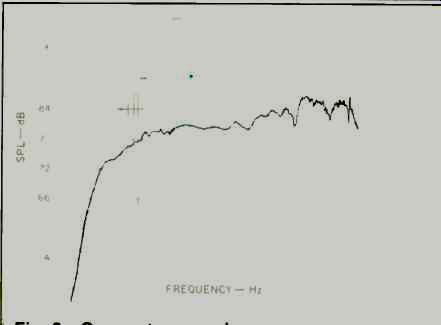
Fig. 3--One-meter on-axis anechoic frequency response, with an input of
1.0 watt into 4 ohms (2.0 V).
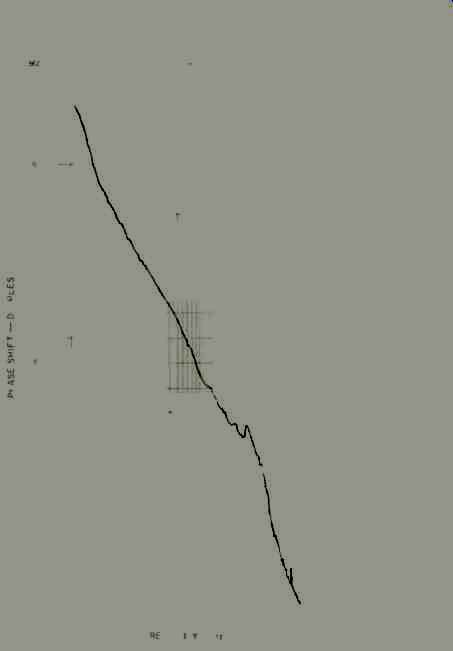
Fig. 4--One-meter on-axis anechoic phase response. The large amount of phase
shift shown is not unusual in three-way systems.
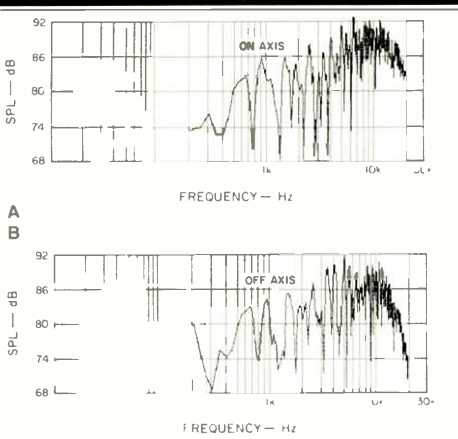
Fig. 5--Three-meter room response, measured on axis (A) and 30° off-axis
(B). Note the smoothness of the off-axis curve.
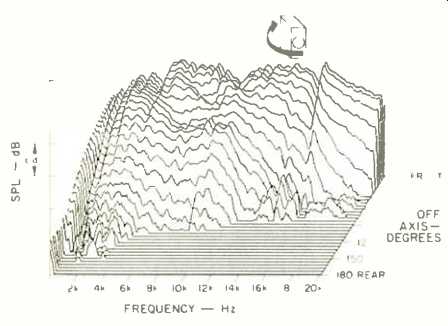
Fig. 6--Horizontal off-axis response plots taken from the front, around
the side, and to the rear; see text.
All measurements were made with the grille removed and, as with the listening tests, were conducted using a solid-state amplifier of low output impedance, as recommended, to achieve the designed spectral balance.
The magnitude of input impedance versus frequency is shown in Fig. 1. At low frequencies, dual peaks straddle the vent tuning frequency of 27 Hz. This vent frequency is one of the more useful pieces of information on this plot, because it is an indicator of the lowest usable frequency of a vented system. At this frequency, the required cone excursion is very low, but it must increase slightly at frequencies above and a great deal below this point. Crossover-related impedance bumps occur around the 700-Hz crossover frequency, and a low of 2.2 ohms is reached at about 10 kHz, where the tweeter comes in.
It is because of this dip to 2.2 ohms that Fuselier recommends a low output-impedance solid-state amp. Tube amps are usually higher in output impedance and could be pulled down 1 dB around 10 kHz, relative to the midrange.
You might prefer this reduction, but it is just an expensive way to equalize. Speaker-wire resistance will cause a similar problem; a 15-foot length of 18-gauge zip cord will also drop the highs 1 dB or so. The low impedance will not cause a modern, 4-ohm-rated amplifier to lose output or distort audibly, but the amp will be working hard in this frequency range. Amplifier overheating won't be a problem because high-level 10-kHz signals are infrequent in music. Needless to say, use heavy wire and don't parallel another set of 3.8Ds for music on the patio.
Reactive and resistive components of the input impedance are plotted in Fig. 2, with frequencies and phase angles of interest called out. At frequencies where there is a large reactive component and a small resistive component, the amplifier has to absorb electrical energy from the loudspeaker over part of the cycle. This condition, also indicated by a large phase angle, is more difficult than delivering energy to the speaker over the entire cycle. The 3.8D is a fairly difficult load, but it will not activate the protection circuitry of common, modern "mid-fi" or better amplifiers.
The 1-meter on-axis frequency response curve of Fig. 3 correlates strongly with what I heard. The 3.80 has a generally smooth response that rises gently with increasing frequency. Bass response rises slightly from its 30-Hz cutoff to 100 Hz. Midrange and high-frequency smoothness is marred only by the slight dips at 4 and around 9 kHz.
Experimentation confirmed that the 4-kHz dip is due to a reflection from the angled filler panel: the 9-kHz dip is caused by interference between midrange and tweeter radiation. Both of these micro-sized problems go away when the response is measured slightly above the front-panel axis, where Fuselier might reasonably expect the listener to be.
The phase shift accompanying the amplitude response of Fig. 3 is shown in Fig. 4. This large amount is not unusual in a well-designed three-way system. It is more important that the phase shifts of the individual drivers track each other and, of course, that the stereo pair is matched. The 3.8Ds are very well behaved in these ways.
The test for 3-meter room response measures frequency response as affected by the early reflections found in a typical room. For these measurements, the speakers were placed in positions previously used in the listening evaluation, with the front of the cabinet 3 feet from the wall behind the speaker and 4 feet from the side wall. The speakers were angled 30° inward and mounted 24 inches off the floor, on stands. The on-axis plot (Fig. 5A) represents what a listener near the center of the room would hear. Its average is smooth but even brighter than shown in the anechoic curves. At 30° off-axis (Fig. 5B), the still-smooth average indicates wide directivity and good room interaction. The usual floor-bounce interference of raised speakers notches the range around 300 Hz.
Amplitude response off-axis is measured every 6° over a 180° degree range and is plotted in a "3-D" format. This is shown in Fig. 6 for the horizontal plane, starting in front and going around the side to the rear. None of the midrange narrowing found in most two-way speakers is evident because the woofer is used only up to 700 Hz, where it is still non-directional. Wide midrange directivity takes over and blends with the tweeter's output.
Figure 7 is the vertical off-axis plot-from below, to the front, to directly above the speaker. Since different angles in this plane produce different distances from the drivers to the microphone (or ears), I expect to see angles where the drivers interfere at the crossover frequencies. There are virtually none near either 700 Hz or 6.5 kHz. This excellent performance is due to good choice of frequencies and the high slope of the crossovers.
Figures 8, 9, and 10 indicate nonlinearity by plotting harmonics generated in the loudspeaker when reproducing a pure tone. There are 3-D plots, with the front-to-back axis indicating power input from 0.1 to 125 watts; the second through the fifth harmonics are shown. The 3.8D is excellent at the test frequencies of 41.2, 110, and 440 Hz (the musical notes E1, A2, and A4, respectively). With 440-Hz input (Fig. 10), the fourth harmonic is almost entirely produced by the midrange, which receives some 440 Hz despite the crossover's 700-Hz high-pass filter.
Figure 11 plots the modulation of 440 Hz by 41.2 Hz when both are fed to the speaker in equal amounts. This is essentially another linearity test at 41.2 Hz, but other factors-such as frequency modulation-are introduced. The 3.8D does well, but it has its power limits. Distortion climbs rapidly above 20 watts and is an annoying 10% at 70 watts.
Power linearity's a full-range linearity test. Starting with 1.0 watt, power is increased in steps to 256 watts. Figure 12 shows the power input and the frequency where the acoustic output fails to track the input increase by 1 dB. Amplifier power greater than this amount will be of little benefit.
Although the 256-watt maximum applied is handled over much of the 3.8D's range, the manufacturer's 160-watt recommendation is certainly reasonable.
The energy versus time response is shown in Fig. 13. In this test, energy is at its maximum in the upper part of the test range of 20 Hz to 20 kHz. The plot shows the strong tweeter output and shows that later arrivals, from diffraction and reflection, are more than 24 dB down.
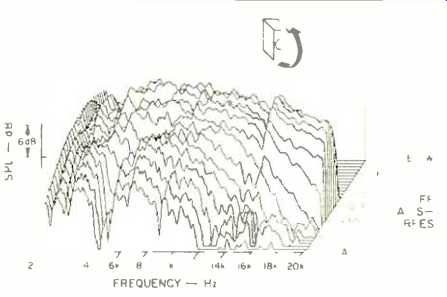
Fig. 7--Vertical off-axis plots taken from below, up the front, and to the
top. Note relative absence of interference effects at the crossover frequencies
of 700 Hz and 6.5 kHz.
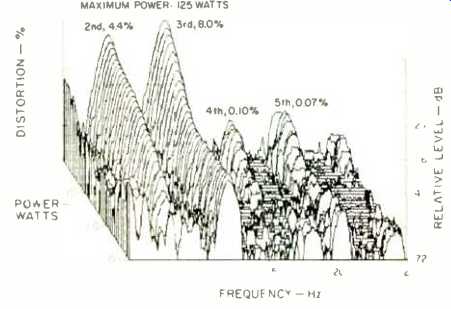
Fig. 8--Harmonic distortion products for the tone E1 (41.2 hz).
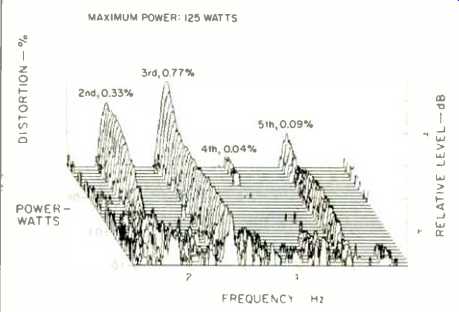
Fig. 9--Harmonic distortion products for the tone A2 (110 Hz).
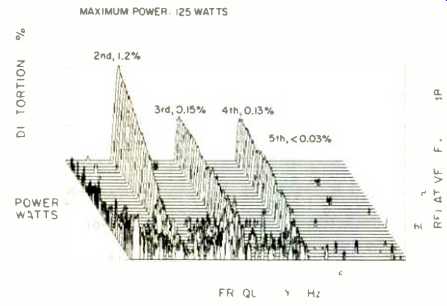
Fig. 10--Harmonic distortion products for the tone 44 (440 Hz).

Fig. 11--IM distortion on 440 Hz (A4) produced by 41.2 Hz (E1) when mixed
in one-to-one proportion.
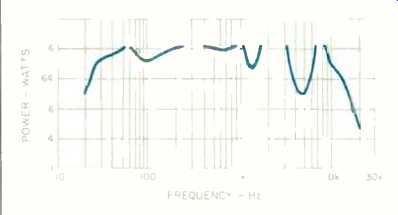
Fig. 12--Power linearity (input power handling vs. frequency for 1-dB compression
of the output).

Fig. 13-Energy vs. time.
Use and Listening Tests
The most exciting part of a loudspeaker review is the listening evaluation, but preceding this are the mundane tasks of unpacking the speakers and reading the manual. I mention this because the 3.8Ds had the most elaborate and protective packing I have seen for a loudspeaker. A beautifully made wooden frame snaps onto the front of the speaker for protection, followed by plastic wrapping, 1/8-inch sheets of plywood for all six sides, a corrugated box, Styrofoam isolators, and finally, the outer corrugated shipping box. (Grilles are shipped separately.) I was impressed and ready for great sound.
The manual recommends placing the 3.8Ds on short stands away from walls. Fuselier provides simple room ratio formulas to suggest a starting position. Obviously, the manufacturer expects that the user is an audiophile willing to meet the demands of best sound reproduction. I found positioning to be relatively noncritical, meaning that suboptimal positions did not degrade the sound greatly. Best positioning proved to be 3 feet out from an 18-foot wall and 4 feet away from the side walls. The Fuselier 3.8Ds were placed on stands and rotated inward to minimize the side wall reflections.
I listened to the 3.8Ds using a variety of familiar recordings, mainly jazz and classical. (I avoid pop and synthesizer music when evaluating naturalness and fidelity.) Spectral uniformity of the 3.8Ds was outstanding, with low coloration and good overall balance. Octave-to-octave balance was only slightly upset by excessive high-frequency content and lack of the lower part of the octave from 16 to 32 Hz. Bass power, extension, and freedom from distortion were up to the highest standards for listening to natural music at reasonable levels, the one minor exception being the lowest organ pedal tones. In other words, the bass is better than that of most add-on subwoofers.
The measured high-frequency rise was a surprise to me when I first saw it, because excessive highs had bothered me only slightly in the listening evaluation. My conclusion, therefore, is that the extreme smoothness of the response makes this rise acceptable. Loudspeakers with a rougher response and boosted highs are always irritating to me.
Proper spatial rendition requires that the speakers "disappear" as perceived sources of sound. The listener should be able to visualize a' wide, but not too wide, soundstage containing stable instrument images and a sense of correct ambience. The system should correctly render differences in perceived depth of images in the soundstage, not just a limited perspective that is always close or always distant.
Success in creating these perceptions depends heavily on the recording, the listening room, and speaker/listener placement. I use proven good recordings, an excellent room, and optimal positioning to get the most from the loudspeaker systems.
The 3.8Ds excel again in spatial rendition: They are as good as, and perhaps better than, any system I have had in my listening room. They were particularly impressive playing the Arrigo Boito Prologue to Mefistofele (Telarc CD 80109-2). The orchestral, choral, and organ sections of this thickly textured piece were separated and arrayed evenly across, and deeply into, the soundstage. Ambience reproduction was perhaps just short of the best I have heard.
Dipole speakers and simple ambience extraction schemes have given me the best results so far.
Loudspeakers with a "presence peak" could have more definition and clarity than the 3.8Ds, but this would obviously be wrong. Also, elevated upper bass could give more "punch." Again, wrong. A loudspeaker with a smooth response, like the 3.8D, does not grab you with one of these focused attributes, and so it may take time to fully appreciate this speaker. If you want punch or presence from these systems, use an equalizer, or better yet, just turn up the volume. The 3.8Ds will play quite loudly with no sign of distortion.
John Fuselier told me that the sample units sent to Audio for review do not reflect a slight reduction in high-frequency energy that has been applied in production for some months now. In any case, elevated highs might be just right for more distant listening in an absorptive room. My treble nit-picking--dare I admit that I have a treble control and occasionally use it?--is a very minor issue. I enjoyed my music through these speakers and recommend the Fuselier 3.8D as a refined loudspeaker for the musically mature audio enthusiast.
-David L. Clark
(adapted from Audio magazine, Jun. 1989)
Also see:
Fried Studio IV Speaker (Feb. 1986)
= = = =